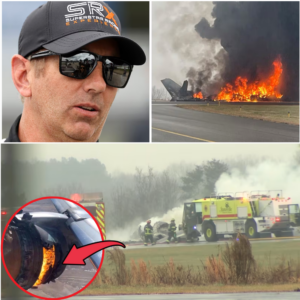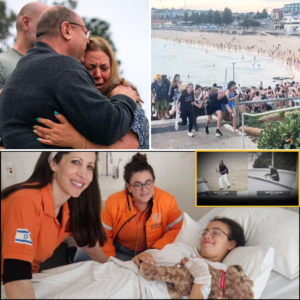On a quiet Friday afternoon in Atlanta, Georgia, a tragic and violent event unfolded at the headquarters of the U.S. Centers for Disease Control and Prevention (CDC), shaking the city and raising questions about mental health, gun access, and public safety. Patrick Joseph White, a 30-year-old resident of Kennesaw, a suburb of Atlanta, is suspected of killing DeKalb County Police Department Officer David Rose, 33, in a shooting spree that targeted six CDC buildings. Authorities revealed that White, who had a history of suicidal ideation and police contacts, used firearms taken from his father’s gun safe to carry out the attack, motivated by his opposition to COVID-19 vaccines. The incident, which left more than 500 shell casings at the scene and prompted a federal review of CDC campus security, has sparked widespread discussion about the intersection of mental health crises, firearm access, and public health policy.
The Incident: A Deadly Attack at the CDC
The shooting occurred shortly before 5 p.m. on Friday, when White, armed with multiple firearms, opened fire on the CDC’s sprawling campus in Atlanta. According to the Georgia Bureau of Investigation (GBI), White unleashed approximately 200 rounds, targeting six buildings on the CDC campus. The barrage pierced “blast-resistant” windows, forcing employees to take cover as bullets rained through the facility. The sheer volume of gunfire—evidenced by the recovery of over 500 shell casings—underscored the intensity of the attack and the potential for even greater loss of life.
DeKalb County Police Officer David Rose, a 33-year-old former Marine who had served in Afghanistan, was among the first responders to arrive at the scene. Rose, who joined the DeKalb County Police Department in September 2024, was fatally wounded by gunfire. His death marked a somber moment for the community, as colleagues and residents mourned the loss of a dedicated officer who had transitioned from military service to protecting his hometown. A makeshift memorial, adorned with flowers and messages of condolence, was established outside the CDC campus in Rose’s honor, reflecting the profound impact of his loss.
White, the suspected shooter, died at the scene from a self-inflicted gunshot wound, according to GBI Director Chris Hosey. The circumstances of his death, combined with the scale of the attack, prompted authorities to investigate not only the logistics of the incident but also the underlying motivations and mental health history of the shooter.
The Suspect: Patrick Joseph White’s Troubled History
Patrick Joseph White, a 30-year-old from Kennesaw, Georgia, had no known criminal record prior to the attack, but his interactions with law enforcement painted a picture of a man grappling with significant mental health challenges. According to the GBI, White had been reported to police on three separate occasions in the past year for expressing suicidal thoughts. These reports, detailed by Fox Atlanta, included at least one instance where White’s father informed dispatchers that his son had accessed a firearm from his gun locker.
In a notable call in September 2024, White told police that his health had deteriorated following a COVID-19 vaccination, which he claimed exacerbated chronic pain from a back surgery he underwent a decade earlier. During this interaction, White described taking a gun from his father’s locker as a “cry for help” rather than an intent to harm others. Following this incident, he was transported to Kennestone Hospital for evaluation but refused mental health treatment on subsequent police contacts in April and July of the same year.
These prior interactions with law enforcement highlighted a pattern of distress that culminated in the deadly attack on the CDC. GBI Director Hosey noted that investigators were working to gather more details from the agencies that responded to these earlier calls, aiming to understand the warning signs and missed opportunities for intervention. The shooter’s mental health struggles, coupled with his access to firearms, raised critical questions about how such crises are managed and whether existing systems are adequate to prevent such outcomes.
The Weapons: Access to Firearms
One of the most alarming aspects of the case was White’s access to the firearms used in the attack. Authorities recovered five firearms, primarily long guns, from the crime scene. According to Hosey, White obtained these weapons by breaking into his father’s gun safe, which was described as secure and inaccessible without forced entry. “All indications in our investigation were that they were secure, and that he forced his way into the safe that contained the weapons,” Hosey said during a Tuesday press briefing. White did not have a key to the safe, and investigators confirmed that he physically broke into it to retrieve the firearms.
The fact that White was able to access such a significant arsenal—capable of firing hundreds of rounds—underscored ongoing debates about gun storage and accessibility, particularly for individuals with known mental health issues. The presence of more than 500 shell casings at the scene suggested that White was prepared for a sustained attack, amplifying concerns about how such a large quantity of ammunition was available to him.
Motivation: A Manifesto Against Vaccines
A search of White’s residence revealed documents that shed light on his motivations. Described by Hosey as a “personal manifesto,” these writings expressed deep discontent with COVID-19 vaccines. While the documents did not contain direct threats, they were intended to “make the public aware” of White’s views on the vaccines, according to investigators. The materials are currently under review by certified behavioral profilers and have been shared with the FBI for further analysis.
White’s opposition to COVID-19 vaccines appeared to be a central driver of his actions. His earlier statements to police, particularly during the September 2024 call, suggested that he attributed his declining health and chronic pain to the vaccine, a belief that may have fueled his anger and sense of grievance. This narrative aligns with broader societal debates about vaccine mandates and public health policies, which have been highly polarizing in recent years.
The CDC, as the nation’s leading public health agency, has been at the forefront of promoting COVID-19 vaccination campaigns, making it a symbolic target for individuals opposed to these measures. White’s attack, while rooted in personal struggles, reflected a broader undercurrent of distrust in public health institutions, a sentiment that has gained traction in certain communities since the onset of the pandemic.
The Aftermath: Security and Policy Implications
In the wake of the attack, the CDC moved quickly to assess the security of its Atlanta campus. The fact that White was able to fire through “blast-resistant” windows raised concerns about the adequacy of existing protections. CDC security guards had briefly stopped White before he drove to a nearby pharmacy and opened fire from a sidewalk, suggesting that initial security measures were insufficient to prevent the attack. The agency is now reviewing its protocols and working to identify any new threats to ensure the safety of employees and visitors.
The incident also drew the attention of high-level government officials. On Monday, U.S. Health Secretary Robert F. Kennedy Jr., accompanied by Deputy Secretary Jim O’Neill and CDC Director Susan Monarez, toured the affected campus. Kennedy, a known skeptic of certain vaccine policies, also visited the DeKalb County Police Department and met privately with Officer Rose’s widow to offer condolences. His presence underscored the national significance of the event, particularly given his recent policy announcements.
Kennedy has made headlines for his stance on COVID-19 vaccines, recently declaring that the CDC would no longer recommend them for healthy children or pregnant individuals. Additionally, he canceled 22 mRNA vaccine development contracts worth approximately $500 million, citing data that he claims shows these vaccines are ineffective against upper respiratory infections like COVID-19 and influenza. These decisions have sparked debate within the public health community, with some praising the move as a step toward transparency and others criticizing it as undermining established science.
Community Response and Broader Context
The death of Officer David Rose resonated deeply in Atlanta and beyond. As a former Marine who served in Afghanistan, Rose was remembered as a hero who dedicated his life to service. The makeshift memorial outside the CDC, filled with flowers and tributes, became a focal point for community grief. Colleagues described Rose as a committed officer whose presence in the department, though brief, left a lasting impact.
The attack also reignited discussions about mental health resources and gun control. White’s history of suicidal ideation and his ability to access firearms despite these warning signs highlighted gaps in the system. Mental health advocates have long called for better integration of mental health services with law enforcement responses, particularly in cases involving individuals in crisis. The fact that White refused treatment on multiple occasions suggests that voluntary interventions may not always be sufficient.
Furthermore, the incident underscored the challenges of addressing anti-vaccine sentiment in a polarized society. The COVID-19 pandemic has amplified distrust in institutions, with misinformation about vaccines circulating widely. While White’s actions were extreme, they reflect a broader phenomenon of individuals feeling alienated or harmed by public health measures. Addressing these concerns requires a delicate balance of public education, empathy, and robust mental health support.
Looking Forward: Lessons and Next Steps
The attack on the CDC headquarters is a stark reminder of the complex interplay between mental health, access to firearms, and public health policy. As investigators continue to analyze White’s writings and prior interactions with law enforcement, there is an opportunity to learn from this tragedy and implement measures to prevent similar incidents. The FBI’s involvement in reviewing the case signals a commitment to understanding the behavioral and ideological factors that drove White’s actions.
For the CDC, the focus is on strengthening campus security and ensuring that employees feel safe in their workplace. The agency’s role as a public health leader makes it a potential target for those with grievances, necessitating robust protections. At the same time, the broader public health community must grapple with how to address vaccine skepticism without alienating individuals or exacerbating tensions.
For the Atlanta community, the loss of Officer David Rose is a wound that will take time to heal. His sacrifice serves as a reminder of the risks faced by law enforcement officers every day. As the investigation unfolds, there is hope that lessons learned from this tragedy will lead to meaningful changes in how mental health crises are managed, how firearms are secured, and how public health policies are communicated to a diverse and often skeptical public.
In conclusion, the shooting at the CDC headquarters was a devastating event that exposed vulnerabilities in multiple systems. Patrick Joseph White’s actions, driven by a combination of mental health struggles and ideological beliefs, resulted in the tragic loss of a dedicated officer and a significant breach of security at a critical public health institution. As the nation reflects on this incident, the focus must be on addressing the root causes—mental health, gun access, and public trust—to prevent future tragedies.





